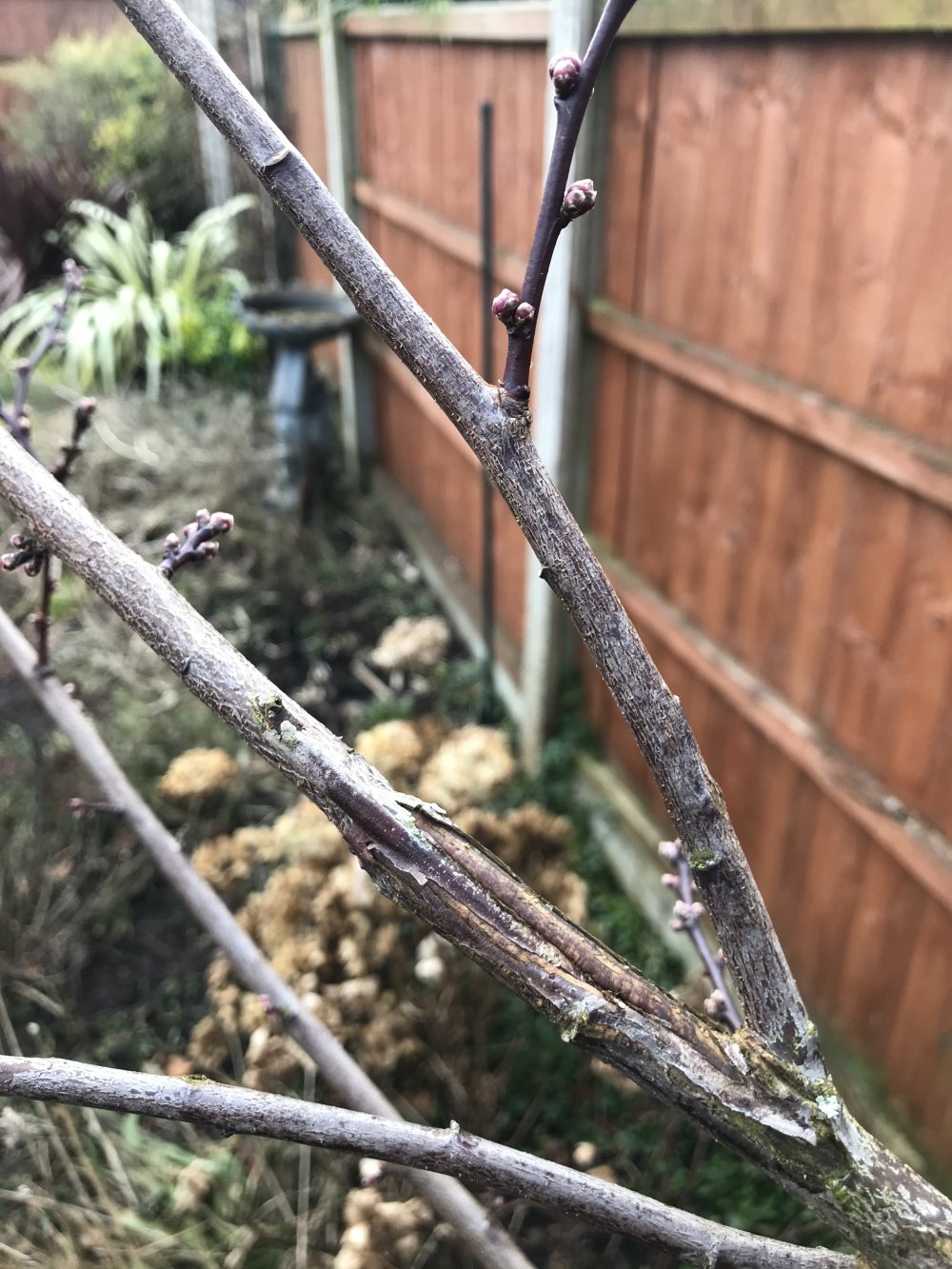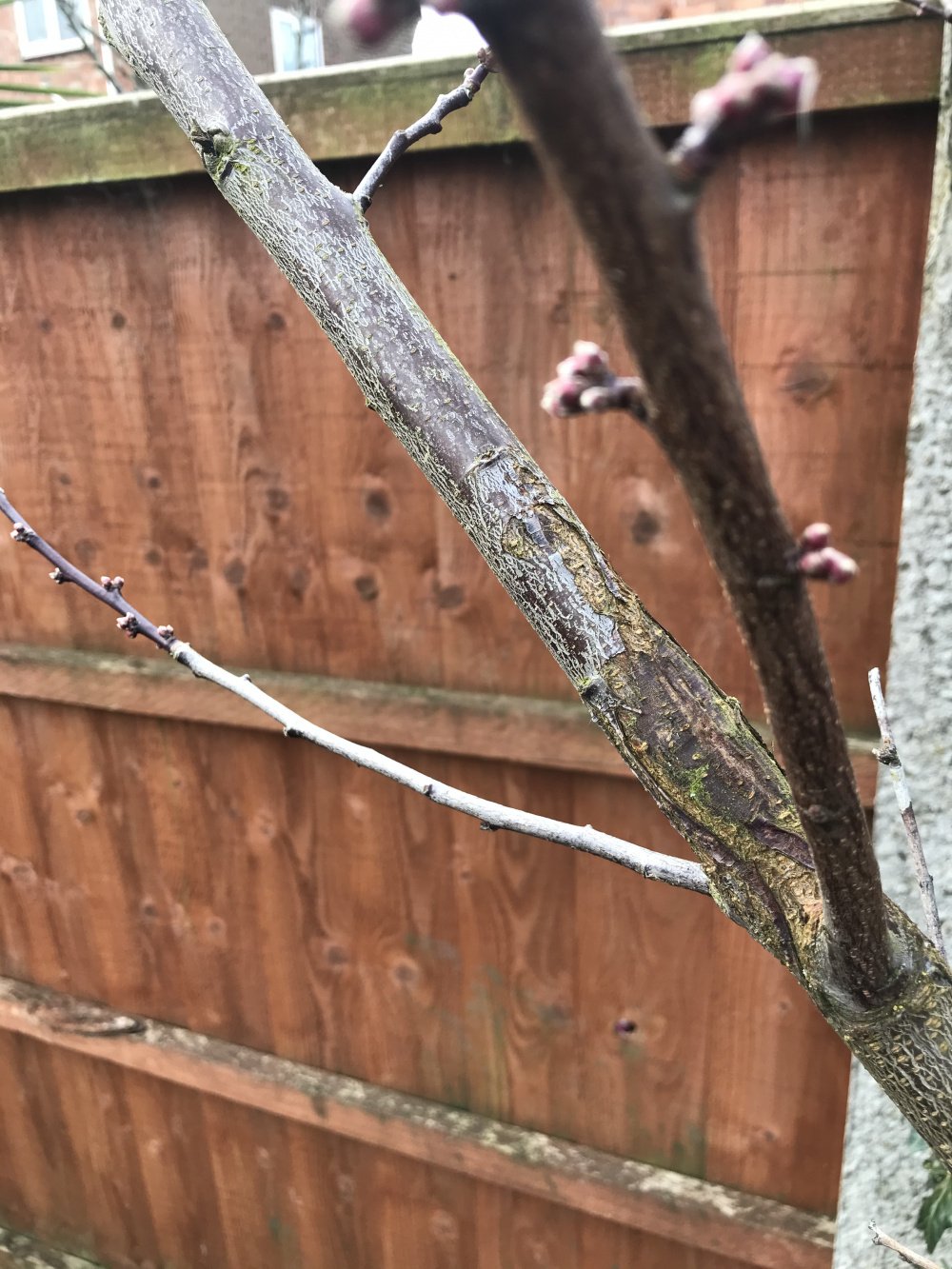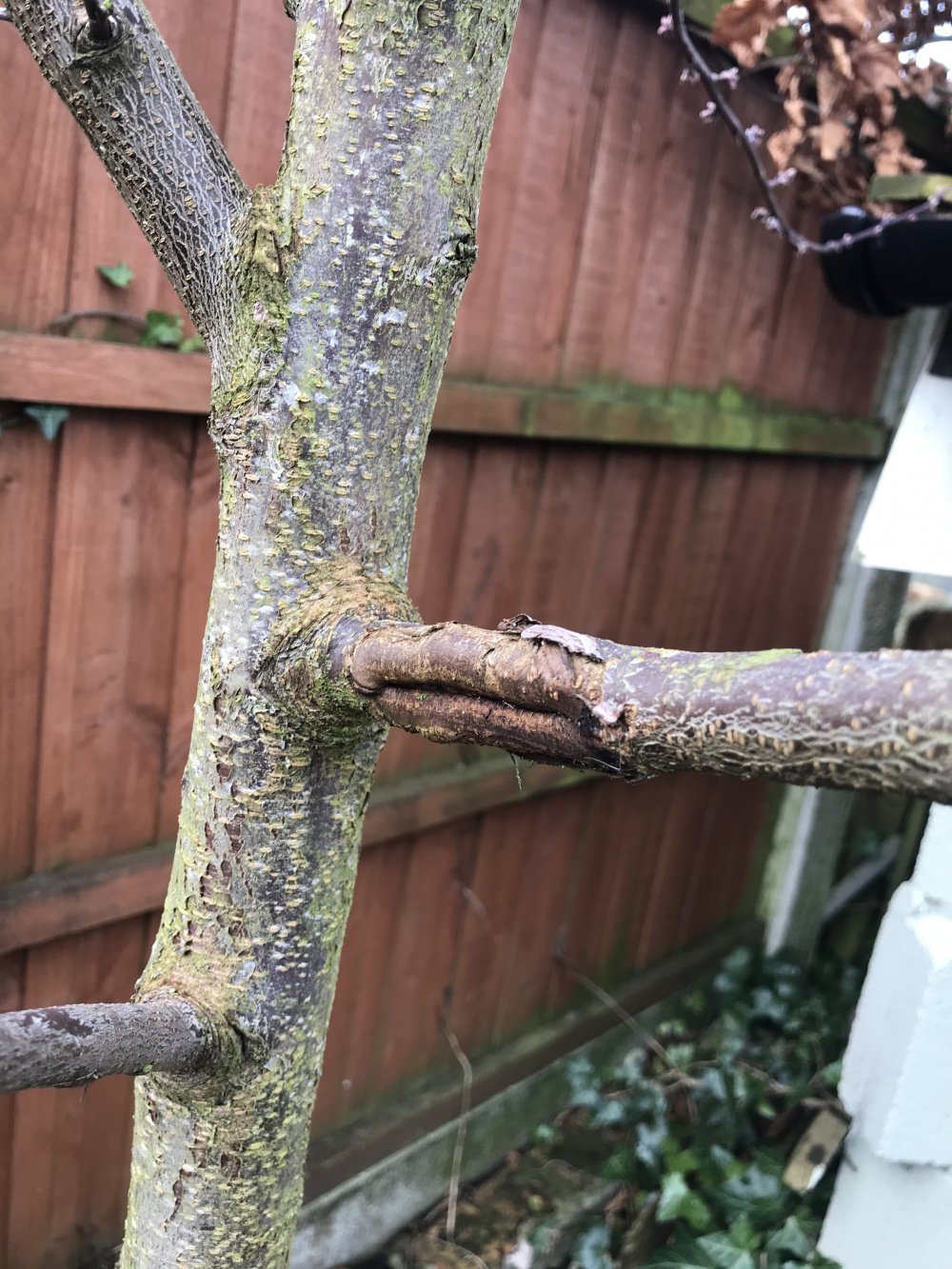This Forum will close on Wednesday 27 March, 2024. Please refer to the announcement on the Discussions page for further detail.
Plum tree possible bacterial canker
Hi everyone,
I hope somebody can help me out with this problem.
My wife bought me this lovely ornamental miniature plum tree for our anniversary 2 years ago.
Last year, during the summer, I noticed that the leaves had turned red prematurely and they had shot holes in them. I assumed it may be a fungal disease and sprayed with a fungal treatment spray. Since then I’ve noticed an opening on the bark in a couple of places on the tree.
After looking this up, I’m now worried this may be bacterial canker. I don’t want to remove this tree as it has a lot of sentimental value. It seems reasonably healthy other than the leaf shot (you can see there are plenty of buds and it’s grown strongly by several feet since planting) and the obvious bark deformities at the two places shown on the photos.
Does this look like canker? If so, would cutting the branches below the bark deformities help the tree?
many thanks for your help on this.

I hope somebody can help me out with this problem.
My wife bought me this lovely ornamental miniature plum tree for our anniversary 2 years ago.
Last year, during the summer, I noticed that the leaves had turned red prematurely and they had shot holes in them. I assumed it may be a fungal disease and sprayed with a fungal treatment spray. Since then I’ve noticed an opening on the bark in a couple of places on the tree.
After looking this up, I’m now worried this may be bacterial canker. I don’t want to remove this tree as it has a lot of sentimental value. It seems reasonably healthy other than the leaf shot (you can see there are plenty of buds and it’s grown strongly by several feet since planting) and the obvious bark deformities at the two places shown on the photos.
Does this look like canker? If so, would cutting the branches below the bark deformities help the tree?
many thanks for your help on this.



0
Posts
If you see weeping/oozing from those areas, then I recommend you prune back. But avoid pruning anything now. If you need to prune out any branches, wait until early summer.